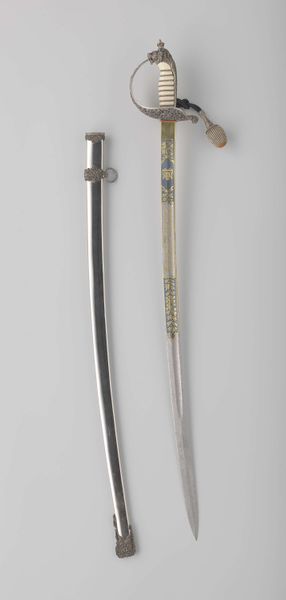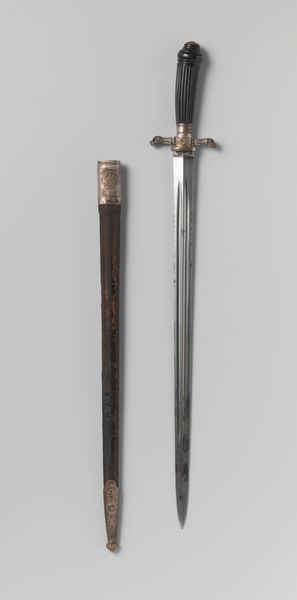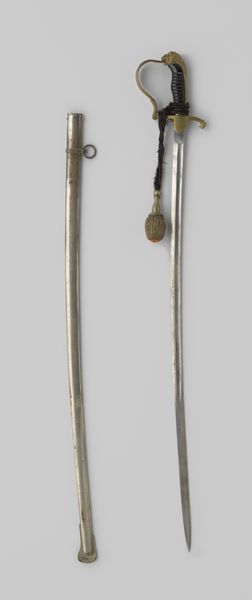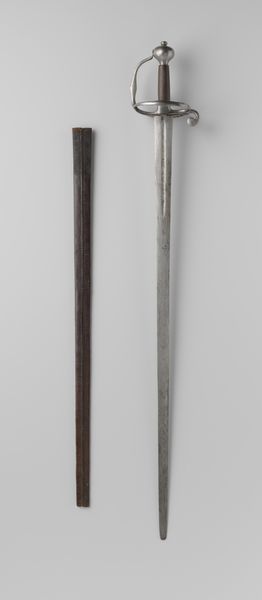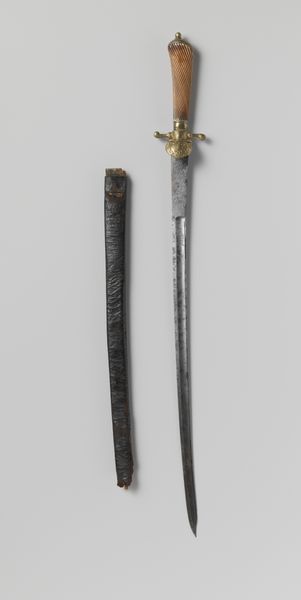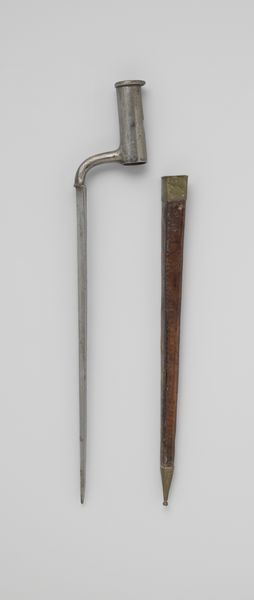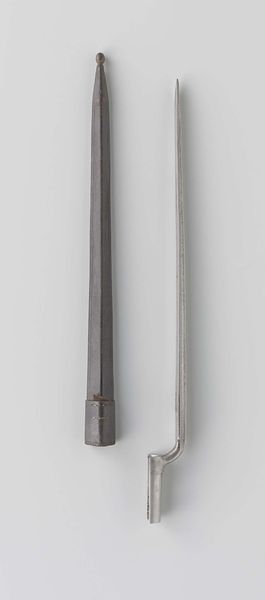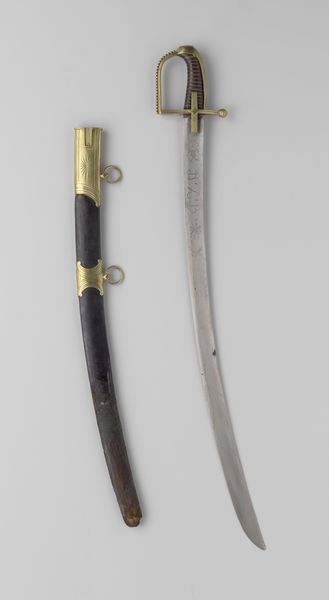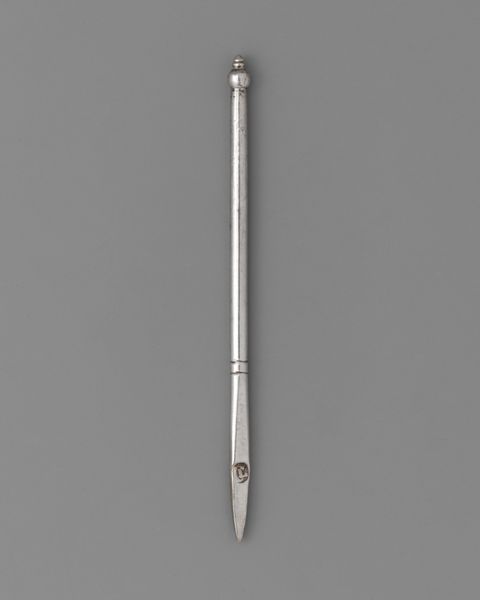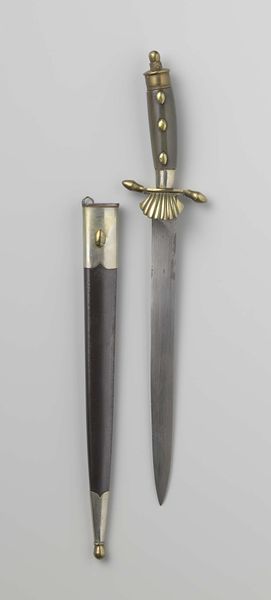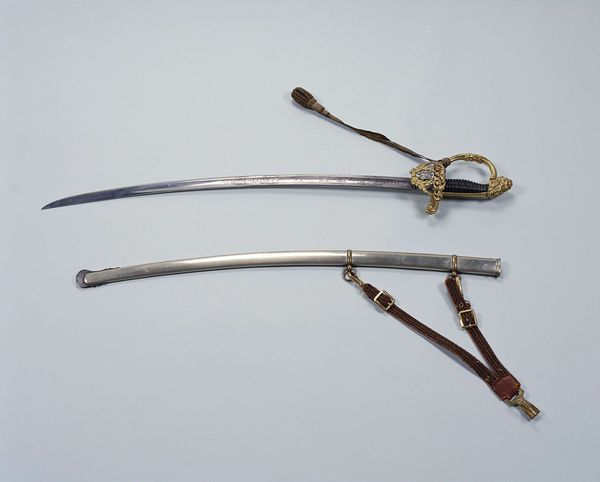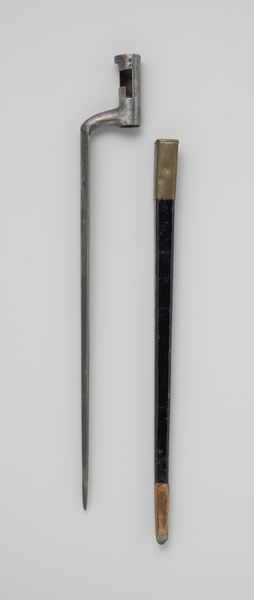
steel, assemblage, metal, sculpture
#
steel
#
weapon
#
medieval
#
assemblage
#
metal
#
sculpture
#
history-painting
Dimensions: length 102.3 cm, length 99.5 cm, length 85.7 cm, width 3 cm, thickness 8.5 mm
Copyright: Rijks Museum: Open Domain
Curator: This object is a cavalry officer's sabre with its scabbard, crafted sometime between 1876 and 1880. It’s attributed to Aug. & Alb. Schnitzler. The primary material appears to be steel, assembled with other metals. Editor: My first impression is its sheer presence, that polished steel speaks volumes. It is cold, precise, functional... almost brutally elegant. The craftsmanship is impressive. Curator: Absolutely. It’s crucial to remember the social and political environment it represents. This was a time of shifting power dynamics across Europe, the sabre symbolizes authority, military strength. Editor: Let’s not forget its physical existence, though. Notice the careful shaping of the blade. I'd be fascinated to learn about the division of labor in its construction—the processes from raw ore to finished product and how industrial production allowed for pieces like these to become relatively available objects. Curator: Good point, these were no longer exclusively aristocratic items. However, its association with officers signified its purpose was less practical combat and more about performative display. Military regalia projected power through these visible markers of rank. Editor: Yes, but who actually held this sword? Where was it worn, used? It reminds me of the shift away from medieval handcraft to 19th century mass production, a turning point in military history. How readily available was steel for making similar pieces like these in other social spaces outside of military circles? Curator: Precisely, the increased availability speaks volumes about societal priorities and values of that time. And where they went wrong. The scabbard isn't purely functional either; it shows a high standard of public presentation. Museums are inherently culpable when we place weapons behind glass like this; we’re creating distance between the public and the grim purpose this tool represents. Editor: I agree, to display these as pieces of industrial production ignores where these steel and metals come from as well as obscures their intended purpose. And it presents them outside of use as static items, where what happened between owner, sword, and setting is rendered static or obsolete, and open to misinterpretation and misrepresentation of facts and events. It can be re-historicized by institutions which is itself problematic. Curator: In our current context, placing such a tangible object allows us to grapple with issues of war, leadership, and historical memory. Editor: Indeed. Seeing the craftsmanship, pondering its use and misuse... the sabre serves as a chilling reminder of the material reality and complex politics it represents, that continues to resonate even now.
Comments
No comments
Be the first to comment and join the conversation on the ultimate creative platform.
